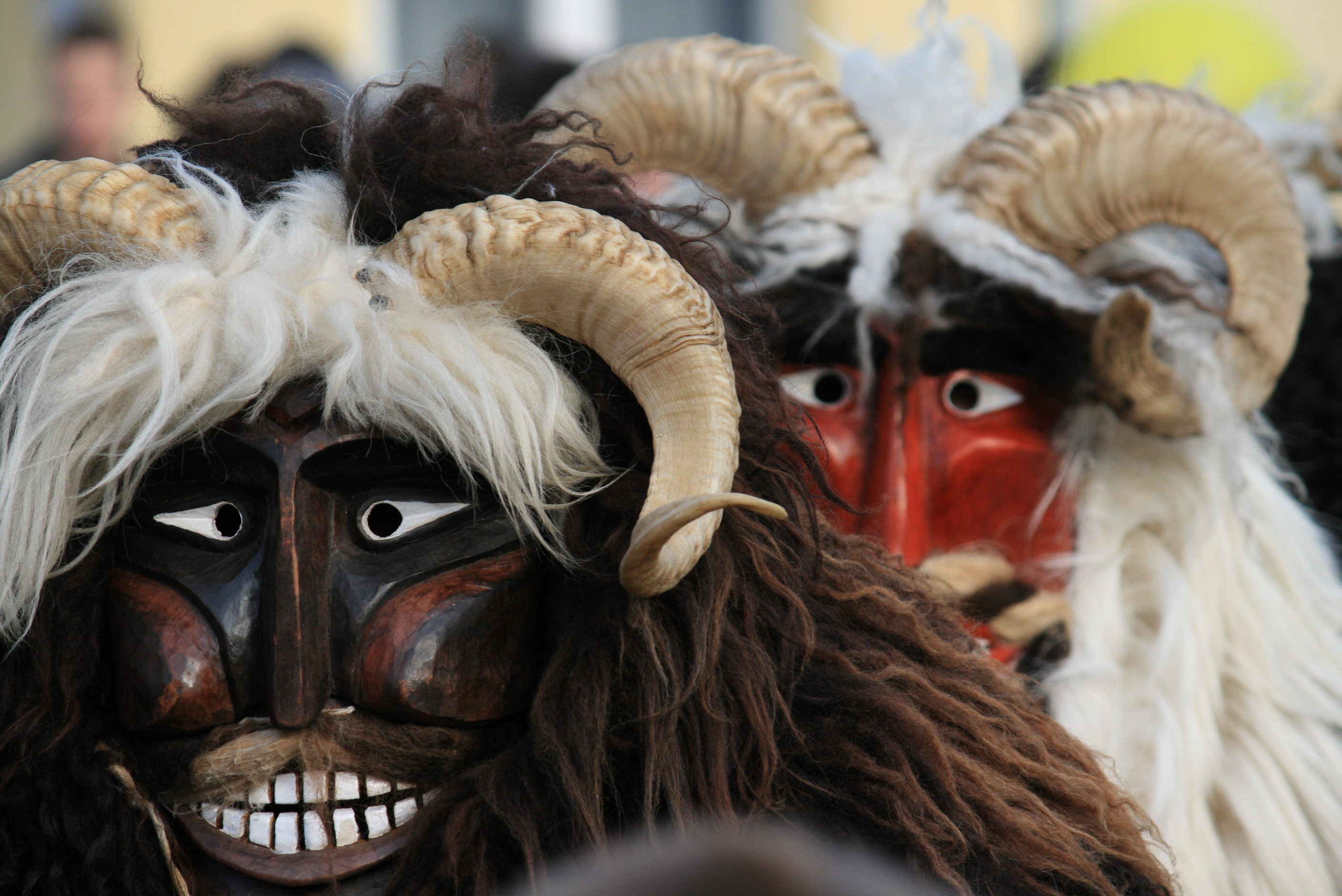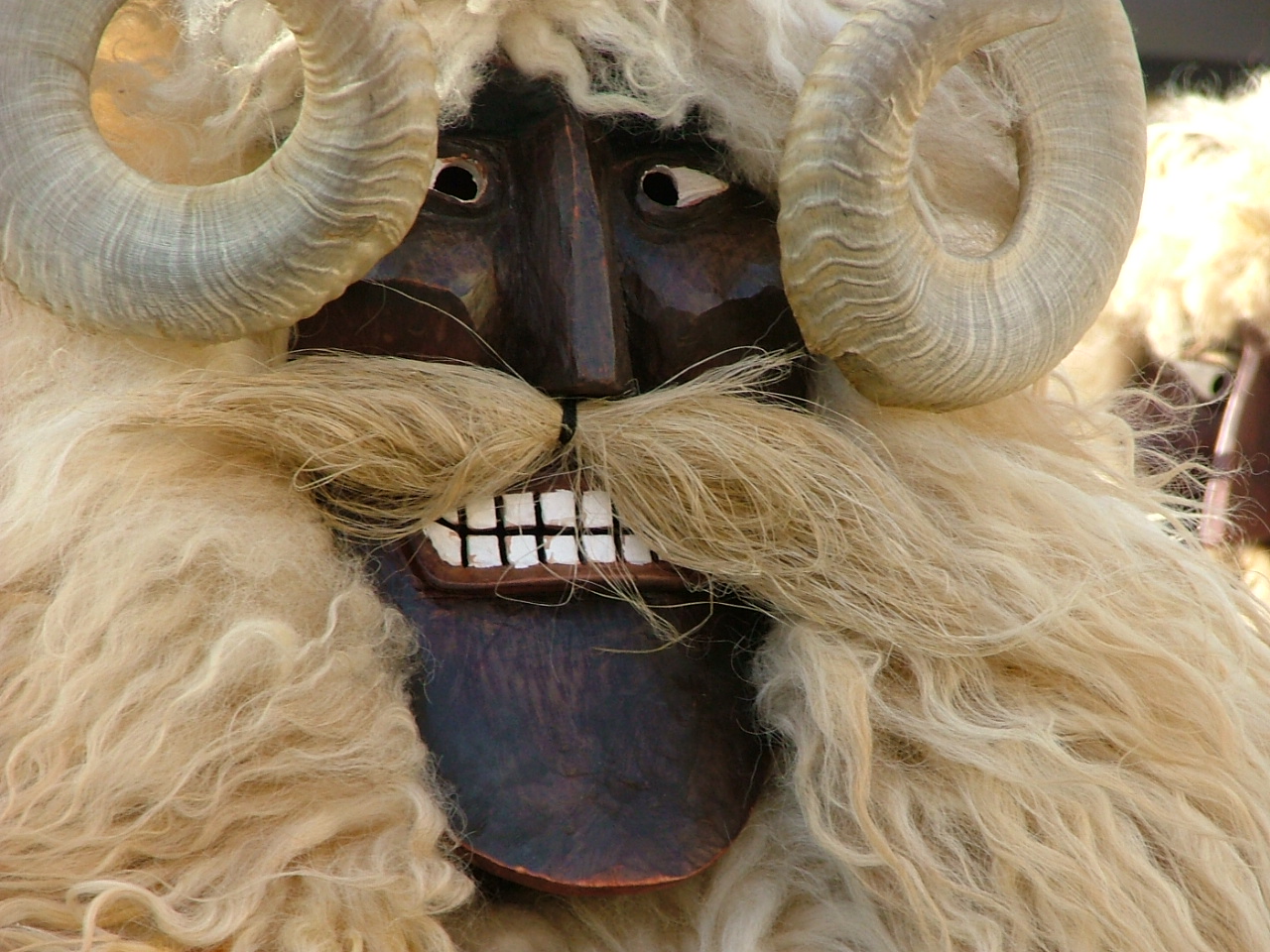The Busójárás is an annual Carnival celebration of the Sokács (Šokci – Croatians) living in the town of Mohács, for six days in February. There are several legends surrounding the origin of the carnival.

“Don’t be afraid, your lives will turn to good soon, and you’ll return to your homes. For that time, prepare for the battle, and carve various weapons and scary masks for yourselves, and wait for a stormy night when a masked knight will arrive to you.”
Some days later, on a stormy night the knight arrived. He ordered them to put up their masks and go back to Mohács, making as much noise as possible. The Turks were so frightened from the noise, the masks and the storm in the night, that they thought that demons had attacked them, and ran away from the town before sunrise.

The other, less popular legend is similar to the previous, but in this case, instead of the Turkish army, the winter had been scared away. Whatever is the truth, locals have celebrated Busójárás (“Busó Walk”) every year since, with “guest Busó teams” from mainly Serbia (local Šokci) and also from Poland. A Busó dons a grotesque mask made from cow horns and carved wood, which is painted by local craftspeople. He wears sheepskin fur and pants stuffed with straw to appear more inhuman.
Traditions include folk music, masquerading, parades and dancing. This year, the event will be held between 23 and 28 February. Throughout the carnival there is a fair in the center of Mohács where craftsmen sell their goods. Children play mischievous games and women are playfully harassed as a gesture of fertility. Feasting is of course one of the prime activities of the festival, including the ritual slaughter of local pigs and wild boar. Look for kolbász, Hungarian sausage, to be served often.

How to get there: Mohács is located next to the Croatian-Hungarian border, 120km south of Budapest. By car, take M6 (E73) to route 56 near Szekszárd all the way to Mohács. Trains and buses from Budapest serve the area via Pécs.
